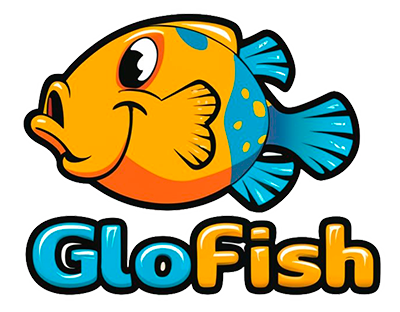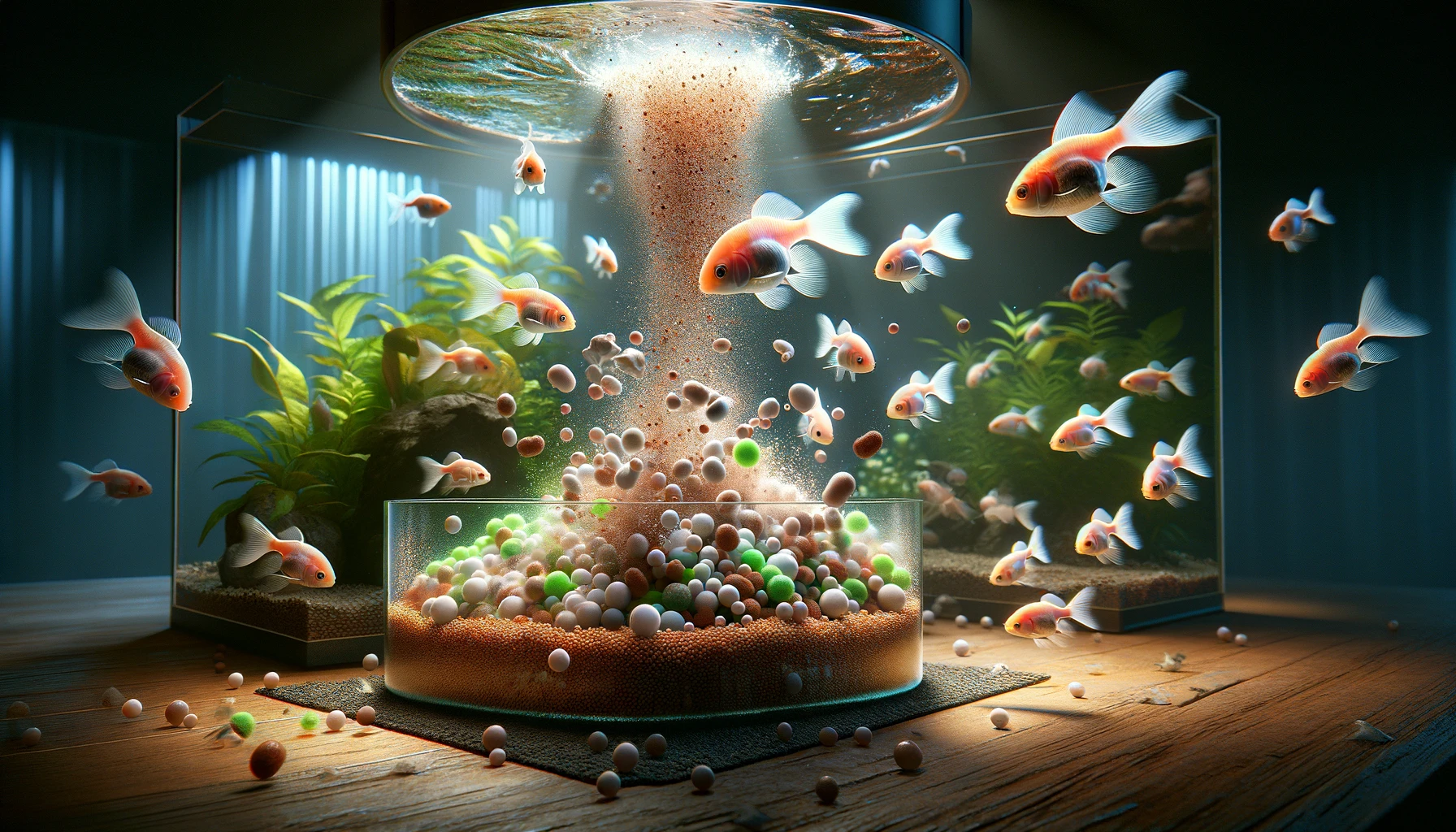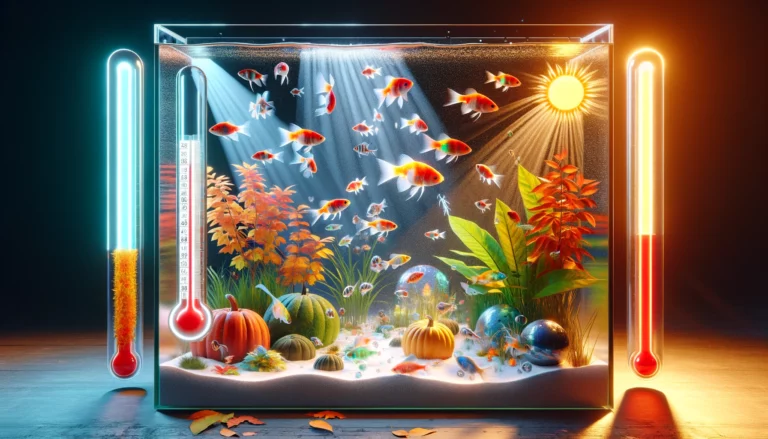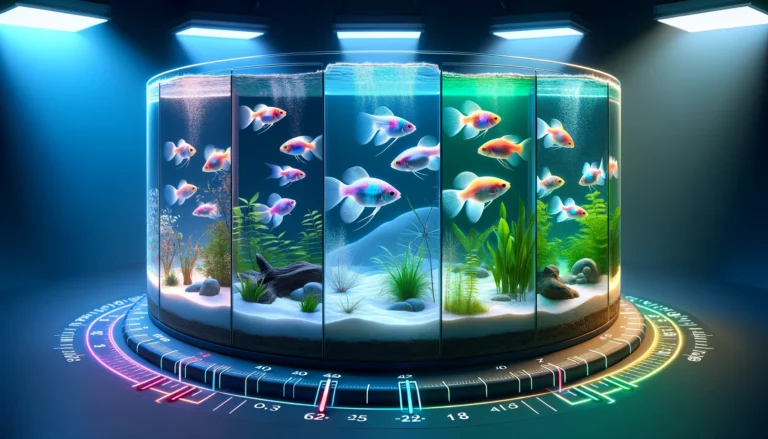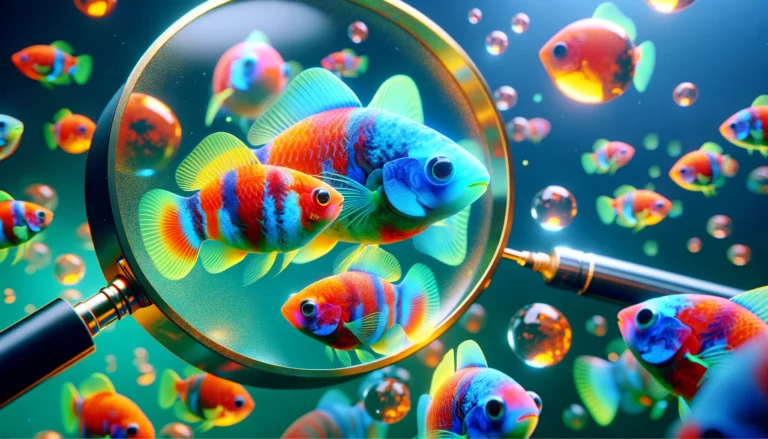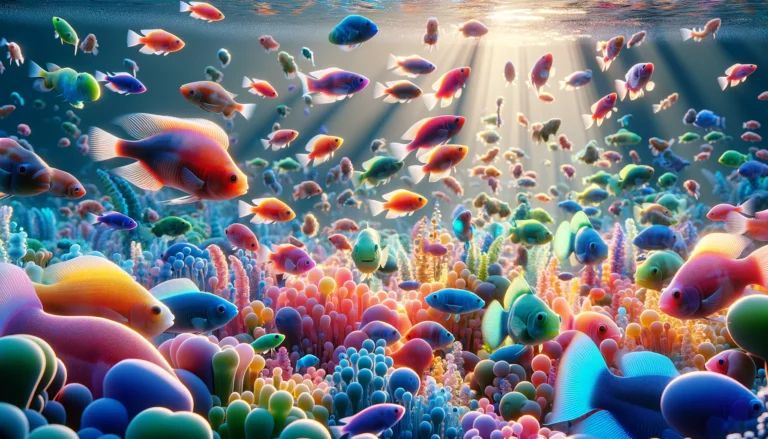Methods of inducing reproduction in GloFish
GloFish are not your ordinary aquarium fish. They glow under black lights due to genetic modification. Scientists initially engineered them to help detect environmental pollutants. Now, they are popular pets. These fish come in bright neon colors: red, green, blue, orange, and pink. They belong to various species, such as zebra danios, tetras, and barbs. GloFish’s glowing feature makes them stand out in aquariums. Their care needs are similar to their non-modified counterparts. This unique aspect drives their popularity among fish enthusiasts.
GloFish are safe for home aquariums. They cannot survive in non-tropical environments, reducing concerns about them affecting local ecosystems. Their creation sparked debates on genetic modification ethics. Yet, their sale is legal and regulated in many countries. Their bright colors appeal to both beginners and experienced aquarists. GloFish add a vibrant touch to any aquarium setup.
To induce reproduction in GloFish, ensure a 20-gallon aquarium size, maintain water temperature between 78°F to 82°F, keep water acidity at a pH of 6.8 to 7.5, and water hardness between 5 to 19 dGH. Provide a diet rich in high-protein foods and live foods such as brine shrimp and bloodworms. Create a spawning environment with plants, caves, and shelters to simulate natural breeding grounds and encourage spawning behaviors. These conditions are essential for the successful breeding of GloFish.
The Importance of Breeding GloFish for Aquarists

Breeding GloFish can be a rewarding experience for aquarists. It allows hobbyists to engage more deeply with their aquariums. Through breeding, enthusiasts learn about fish biology and genetics. It also provides insights into the care needs of fish at different life stages.
For those interested in conservation, breeding GloFish can highlight the importance of genetic diversity and responsible pet ownership. It also offers a chance to share knowledge with the aquarium community. Breeding these fish can contribute to the hobby’s sustainability. By breeding GloFish, aquarists can ensure a supply of these unique fish without relying on commercial breeders.
Breeding GloFish at home can be a fun project. It can also lead to a deeper appreciation of these creatures. However, it requires patience, care, and attention to detail. Aquarists should research and prepare thoroughly before starting. Success in breeding GloFish can bring a sense of accomplishment. It also enhances the overall aquarium experience.
Breeding GloFish supports ethical pet ownership. It encourages aquarists to think about the impact of their hobby on the natural world. By understanding the complexities of breeding genetically modified fish, enthusiasts can make informed decisions. They can also help educate others about responsible fish keeping.
In summary, breeding GloFish offers both practical and educational benefits. It deepens the bond between aquarists and their fish. It also promotes a responsible approach to the hobby. Breeding these glowing beauties can be a gateway to a lifelong passion for aquarium keeping.
Preparing for Breeding
Selecting and Preparing a Breeding Aquarium
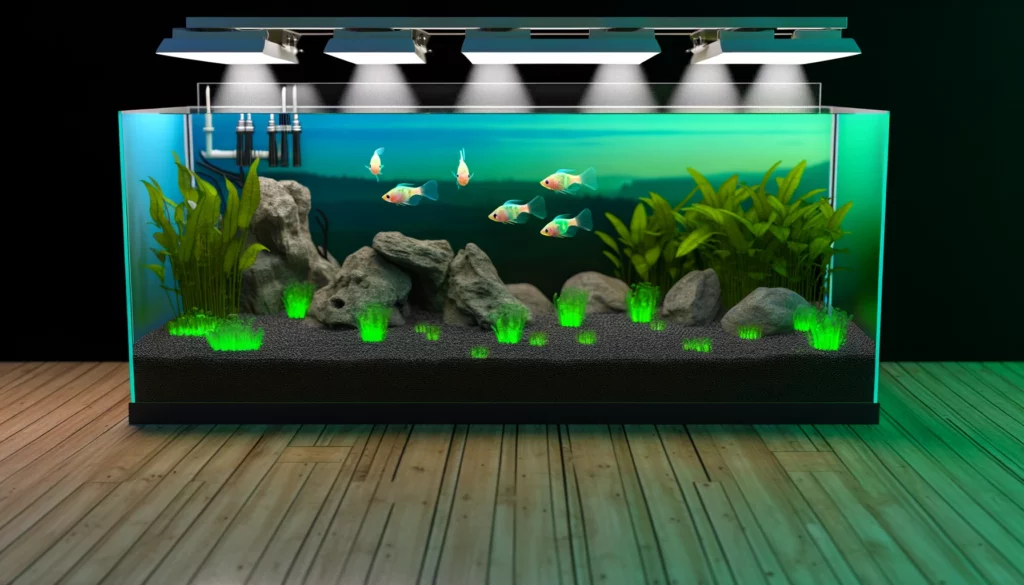
Start with choosing the right aquarium for GloFish breeding. A separate breeding tank ensures a controlled environment. A 20-gallon tank works well for most GloFish species. It provides ample space for parents and fry. Equip the tank with a sponge filter. This protects young fish from being sucked into filtration systems.
Add plants and hiding spots to the breeding tank. These mimic natural breeding grounds. They offer a sense of security for the fish. Substrate is optional. Yet, it can make the tank more comfortable for GloFish.
Optimal Water Parameters
Water conditions play a crucial role in breeding success. Maintain the temperature between 78°F to 82°F (25.5°C to 27.8°C). This range stimulates breeding behaviors. The pH level should be around 6.8 to 7.5, suitable for most GloFish species. Water hardness is less critical but aim for 5 to 19 dGH. Regularly test the water. Keep these parameters stable to encourage breeding.
Adjust the light cycle to mimic natural day and night. This can also stimulate breeding in GloFish. Perform regular water changes. Keep the environment clean and stress-free for the fish.
Selecting Healthy Breeding Stock
Choose healthy, mature GloFish for breeding. Look for vibrant colors and active behavior. These are signs of good health. Fish ready for breeding often display brighter colors. Males may show more interest in females. Females might appear fuller, indicating egg development.
Avoid breeding fish with any signs of illness or stress. This includes faded colors, lethargy, or fin damage. Healthy parents are more likely to produce healthy offspring.
Conditions for Stimulating Breeding
Changing Diet to Encourage Reproduction
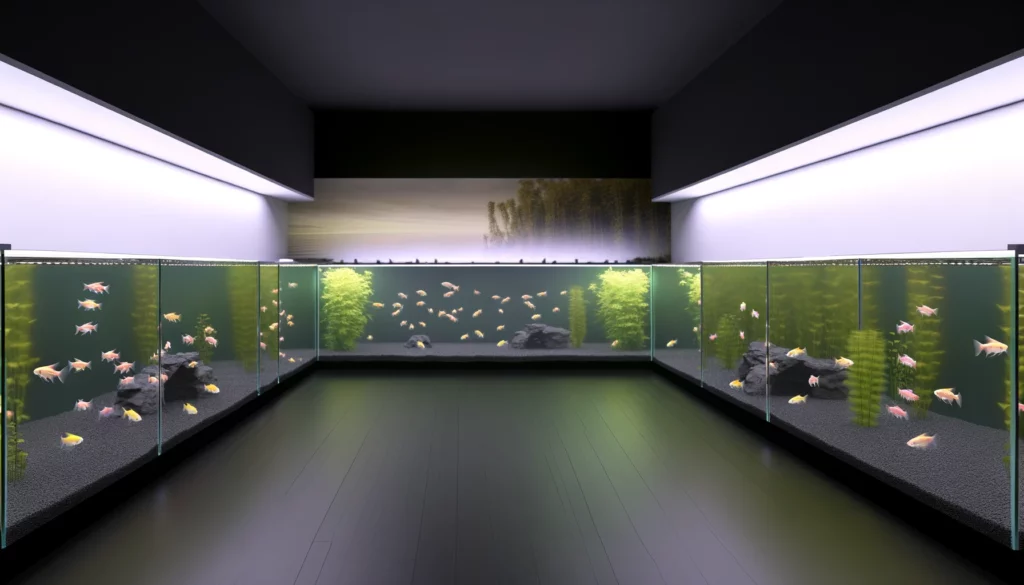
A nutritious diet is essential for preparing GloFish for breeding. Introduce high-quality, varied foods to stimulate breeding. Live foods, such as brine shrimp and bloodworms, are especially effective. They mimic the natural diet and improve the fish’s health and fertility. High-protein foods increase the likelihood of successful breeding. Incorporate these into the GloFish’s diet weeks before attempting to breed.
Adding vegetables to the diet can also benefit GloFish. It ensures they receive all necessary nutrients. A balanced diet enhances color vibrancy and vitality, making them more likely to breed.
Mimicking Seasonal Conditions
Recreating natural seasonal changes can trigger breeding behaviors in GloFish. Gradually increase the tank’s temperature by a few degrees. This simulates the onset of the breeding season in their natural habitat. A slight temperature increase can make a significant difference.
Adjusting the light cycle is also crucial. Increase daylight hours gradually. This simulates longer days of spring and summer. These changes signal to GloFish that it’s the right time to reproduce.
Providing Spawning Sites and Hiding Places
Creating an environment that resembles natural breeding grounds is key. Add plants, caves, and other hiding spots to the breeding tank. These not only offer security but also serve as potential nesting sites. Mosses and fine-leaved plants are ideal for egg-laying species. They provide surfaces for eggs to adhere to.
Floating plants can create dimmer areas in the tank. This can mimic the shaded waters of natural habitats. Such conditions are conducive to GloFish breeding activities.
The Breeding Process
Describing GloFish Spawning

The spawning process for GloFish varies by species but generally follows a pattern. Most GloFish are egg-layers, with females releasing eggs for males to fertilize externally. The actual spawning often happens early in the morning. It can be a quick process, lasting just a few hours.
Before spawning, male GloFish may display more vibrant colors. They engage in courtship behaviors, such as chasing or displaying in front of females. The female’s abdomen becomes noticeably fuller, indicating egg development. When ready, the female releases eggs among plants or other substrates. The male then fertilizes these eggs.
Some GloFish species, like the GloFish shark, are livebearers. This means they give birth to free-swimming fry rather than laying eggs. The breeding signs and process differ slightly for these species.
Identifying the Start of Spawning
Recognizing the onset of spawning involves observing changes in behavior and the tank environment. Increased activity and courtship displays are key indicators. Males become more territorial and show off to attract females. Females look rounder due to egg accumulation.
In egg-laying species, you might notice eggs scattered around the tank. These can be on plants, the substrate, or decorations. In tanks with livebearers, the presence of tiny, free-swimming fry will indicate successful breeding.
Changes in the aquarium, like nests or bubble nests in some species, signal spawning. Some GloFish species, such as bettas (if GloFish bettas were to exist), create bubble nests for egg keeping.
Care for Eggs and Fry
Conditions for Successful Egg Development
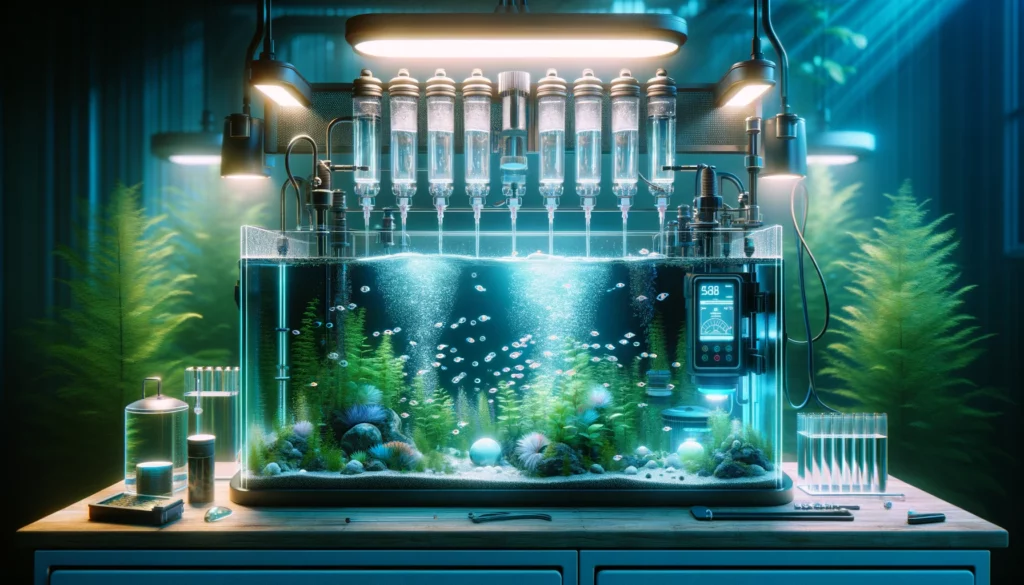
For GloFish eggs to develop successfully, maintaining pristine water conditions is crucial. Keep the water clean and stable to prevent fungal infections. Some breeders use methylene blue in the water. This reduces the risk of fungal growth on eggs. The temperature should remain consistent, as previously set for breeding. Gentle filtration, such as a sponge filter, prevents eggs from being disturbed while maintaining water quality.
Lighting should be subdued to mimic natural conditions and reduce stress. Regular monitoring is necessary. Remove any unfertilized or fungus-infected eggs promptly. This prevents the spread of disease to healthy eggs.
Care for Fry After Hatching
Once GloFish fry hatch, they are extremely vulnerable and require careful attention. Initially, fry will feed on their yolk sacs. After this, they need very fine food. Infusoria, liquid fry food, or finely crushed flake food are suitable first foods. As they grow, they can graduate to micro worms or baby brine shrimp.
Frequent, small water changes help maintain water quality. But, be careful to avoid strong currents that can harm the fry. Keep the breeding tank well-planted. Plants provide fry with hiding spots and a natural feeding ground.
Suitable Food for GloFish Fry
Feeding GloFish fry the right food is essential for their growth. Start with infusoria or commercially available liquid fry food. These are small enough for fry to eat. As fry grow, introduce newly hatched brine shrimp. These are highly nutritious and promote growth.
For species-specific fry, research their dietary needs. Some may require special diets to flourish. Consistent feeding schedules and varied diets help ensure balanced nutrition.
Common Breeding Problems
Spawning Difficulties: Causes and Solutions

One common issue in GloFish breeding is the failure to spawn. This can stem from unsuitable water conditions, such as incorrect temperature or pH levels. To solve this, closely monitor and adjust the water parameters to meet the specific needs of your GloFish species. Stress is another factor that can inhibit spawning. Ensure the breeding environment is calm and secure, with plenty of hiding spots.
A lack of proper diet can also affect spawning readiness. Enhance the fish’s diet with varied, high-quality foods to improve their health and breeding potential. Finally, if your GloFish are still not spawning, consider their age and health. Only mature and healthy fish are likely to breed successfully.
Caring for Fry Health: Common Diseases and Prevention
Fry are susceptible to various diseases, often due to poor water quality or overcrowding. One prevalent issue is fungal infections, which can be identified by white, cotton-like growths on the fry. Regular water changes and maintaining a clean tank environment are key to prevention. Adding a small amount of aquarium salt or using fungicide treatments (as per product instructions) can also help.
Bacterial infections are another concern, manifesting as cloudy eyes, lethargy, or abnormal swimming. Keeping the tank clean and avoiding overfeeding are crucial preventive measures. For treatment, consult a veterinarian for appropriate antibiotics.
Swim bladder disease can affect fry, causing buoyancy issues. This is often due to overfeeding or poor nutrition. Offering a balanced diet and ensuring proper water quality can prevent this condition.
Conclusion
Breeding GloFish is a journey that combines science, patience, and dedication. Successful breeding hinges on several key factors:
- Creating optimal living conditions with the right water parameters and a stress-free environment. This is crucial for encouraging spawning and ensuring the healthy development of eggs and fry.
- A nutritious and varied diet enhances the health and breeding potential of GloFish. It prepares them for spawning and supports the growth of the fry.
- Understanding the specific needs and behaviors of GloFish species guides proper care during the breeding process. Observing and adjusting to these needs can significantly increase breeding success.
Breeding GloFish offers aquarists a unique opportunity to delve deeper into the world of aquarium keeping. It’s not just about the vibrant colors and the glow; it’s about understanding life cycles and contributing to the sustainability of these fascinating creatures. The experience of breeding GloFish can be incredibly rewarding. It allows hobbyists to witness the miracle of life, from egg to glowing adult fish, right in their aquariums.
This endeavor also fosters a greater appreciation for the responsibility we carry for our aquatic pets. It emphasizes the need for ethical breeding practices and conservation awareness. By breeding GloFish, aquarists become part of a community that values not only the aesthetic appeal of these fish but also their well-being and the integrity of the hobby.
GloFish Breeding F.A.Q.
1. How do different GloFish species react in community tanks when breeding?
- GloFish typically exhibit species-specific breeding behaviors. In community tanks, stress levels can be higher, potentially affecting breeding success. Providing ample space and hiding spots can mitigate stress.
2. What are ethical considerations in breeding GloFish?
- Ethical considerations include the welfare of genetically modified fish, the potential for ecological impact if released, and ensuring responsible pet ownership.
3. Can breeding GloFish aid scientific research or conservation?
- Breeding GloFish in controlled environments can offer insights into genetic modifications’ effects on fish behavior and physiology, though their direct contribution to conservation is minimal.
4. What are the long-term health impacts on captive-bred GloFish?
- With proper care, captive-bred GloFish can lead healthy lives. However, breeding practices should prioritize genetic diversity to prevent health issues.
5. How does genetic modification affect GloFish breeding patterns?
- Genetic modifications don’t significantly alter the breeding patterns of GloFish compared to their non-modified counterparts; environmental conditions and care practices remain key factors.
6. Are there legal restrictions on breeding GloFish?
- Regulations vary by region. In some areas, breeding GloFish is regulated or requires a permit to ensure responsible practices and prevent ecological risks.
7. How can breeders ensure genetic diversity in GloFish populations?
- Introducing GloFish from different sources and carefully selecting breeding pairs can help maintain genetic diversity and reduce the risk of hereditary health issues.
8. What advanced techniques can enhance GloFish breeding success?
- Techniques such as controlled water condition adjustments, specific dietary regimens, and selective breeding practices can improve breeding outcomes.
9. How do GloFish interact with their fry?
- GloFish parental care varies by species; most do not exhibit parental behaviors, and fry might need protection from being eaten by adults.
10. What are potential environmental impacts if GloFish are released into the wild?
- Released GloFish could potentially disrupt local ecosystems. However, their survival in wild conditions is unlikely due to their tropical nature and inability to camouflage.
